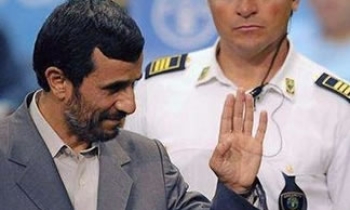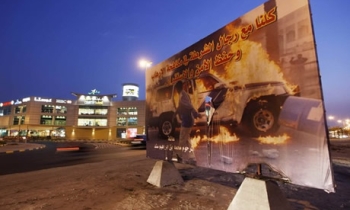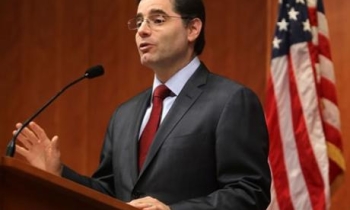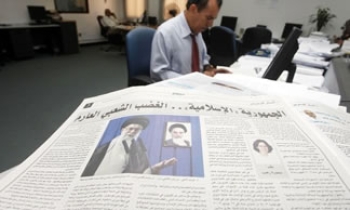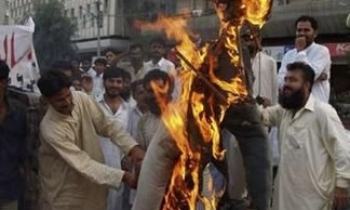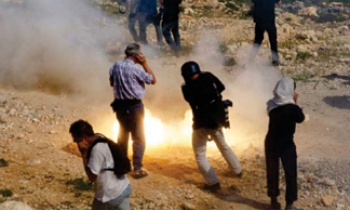LONDON, July 7 — With his picture splashed across the front pages of British newspapers, Mohammed Asha, a doctor in the National Health Service, over the last few days became the human face of a suspected plot to bomb a London nightclub and an attack at Glasgow Airport.According to the British police, the photos should never have appeared.
Britain has some of the tightest restrictions on reporting in the Western world, limiting news organizations’ ability to publish pictures or articles about the subjects of criminal investigations. The rules are intended to ensure fair trials by keeping potentially prejudicial information from would-be jurors.
But critics say the restrictions seem increasingly out of step in an era when Britons can turn to the Internet or other sources for unfiltered information on prominent subjects like terrorism. And, based on their coverage of the recent events, news organizations seem unclear about how to apply the rules.
“I’m a bit bemused by the coverage,” said Richard Parkes, a lawyer specializing in media matters in London. “There seem to be conflicting signals given out by the press.”
Last Monday, Scotland Yard asked media organizations not to publish pictures or artists’ impressions of people involved in the case, saying that identification of the suspects could be an issue in any trial, according to editors who received the e-mail request.
A glance at the front pages and at television screens a day later showed that British news organizations were divided in their response.
Several tabloid newspapers, including The Sun and The Mirror, prominently featured pictures of Mr. Asha, one of the suspects named in news reports, on Page 1.
The Telegraph, a broadsheet, also published a picture of Mr. Asha on the front page. The Times used a photo inside the paper, but pixilated it to make the image unrecognizable. The Guardian, on Page 1, had a picture of Mr. Asha’s father, interviewed in Jordan, where he held a photo of his son. The picture-within-a-picture, however, was pixilated.
British television reports in general were also blurring the faces of the terrorism suspects.
Several newspapers, contacted last week, declined to discuss their decisions, saying it was an internal matter. The Telegraph said in a statement that the photographs it used had “been published legitimately and in the public interest.”
The stakes in publishing can be high. According to media lawyers, editors can be jailed for violating the Contempt of Court Act, which says that news organizations should not publish anything other than basic information like an accused person’s name and age, as well as the charge against him or her. In criminal cases, including terrorism investigations, the restrictions take effect as soon as a suspect is arrested.
A spokesman for Britain’s attorney general, who is ultimately responsible for enforcing the law, said in a statement that the coverage was “under review.”
In these cases, the police did not even release the suspects’ names, leaving reporters to dig them up on their own. By midweek, most of the eight suspects who had been detained, including Mr. Asha, had been named in news reports.
On Thursday, the police repeated their request, sending out another message to editors and adding that they were worried that continued speculation about the case could damage any prosecutions.
British newspaper editors have spoken out recently against the restrictions. Especially in terror cases, where the authorities have the right to hold suspects as long as 28 days without charges, journalists chafe at the restrictions.
“It is crucial that the media strive to discover the detail of any alleged plots, and do not simply adhere to bland official statements as if publishing in some kind of police state,” Steve Dyson, editor of The Birmingham Mail, wrote in an opinion piece in The Guardian last winter after news organizations reported a suspected plot to kidnap a British soldier.
Media lawyers say there may be other reasons, in addition to the desire to guarantee fair trials, why the authorities might not want news organizations to print photos of terrorism suspects. The police, for example, might be concerned that repeated lineups of photos of young men of Middle East origin could fuel racist sentiment against British Muslims.
Last week, a spokesman for the British Transport Police asked a reporter not to write about a controlled explosion that had been carried out on a suspicious package near a London Underground station, saying the authorities wanted to avoid alarming the public in the wake of the foiled bombings in London and Glasgow.
Roderick Dadak, a partner in the law firm of Lewis Silkin in London, which works with clients in the media industry, said, “What’s worrying is that the police and the attorney general seem to be trying to make it even more difficult” for news organizations to report on terror cases.
The scramble for details about terror investigations, in the absence of updates from the authorities, holds another danger for media companies, lawyers say.
Several British news organizations had to make libel payouts when they wrongly identified people as suspects in a plot to blow up airliners last summer. In one case, newspapers had used a photo of the wrong person.
Another challenge to Britain’s rules is the rise of “citizen journalism.” Photos taken on mobile phones or digital cameras have figured prominently in recent coverage of terrorist incidents, including the Glasgow Airport attack. Because many bystanders have sent images on to other people, lawyers said, it is harder to argue that a media organization should not be allowed to publish them.
The lawyers say that British journalists may feel increasing pressure to keep up with reporting on the Internet, where foreign journalists do not necessarily feel bound by the same restrictions.
Lawyers also said that the pervasiveness of the Internet made it increasingly difficult to insulate jurors from reports on a case or background information on a suspect.
“What does the judge do: Say, ‘Ladies and gentlemen of the jury, you may not Google the suspect’? ” Mr. Parkes asked.

